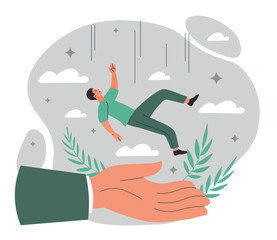
Falls can be a major cause of serious injury and illness, especially in older adults. According to the Centers for Disease Control and Prevention (CDC), falls are the leading cause of both fatal and nonfatal injuries among people aged 65 and older. Falls can lead to broken bones, head injuries, and other serious health issues. Fortunately, there are steps that can be taken to reduce the risk of falls and protect yourself from injury and illness.
Falls can happen anywhere—at home, in the workplace, or out in public. Knowing the risks and how to prevent falls can help you stay safe and healthy.
What Causes Falls?
Falls can be caused by a variety of factors, including:
• Poor balance: Balance issues can make it difficult to stay upright.
• Weakness or fatigue: Weakness or fatigue can make it difficult to stay on your feet.
• Poor vision: Poor vision can make it difficult to see potential hazards.
• Poor footwear: Shoes with slippery or worn soles can make it difficult to stay on your feet.
• Medications: Certain medications can cause dizziness or drowsiness, which can increase the risk of falls.
• Inadequate lighting: Poor lighting can make it difficult to see potential hazards.
How to Prevent Falls
The most important step in preventing falls is to identify and address the risk factors that increase your chances of falling. Here are some tips to help reduce your risk of falling:
• Exercise regularly: Regular physical activity can help maintain strength and balance and reduce the risk of falls.
• Check your medications: Talk to your doctor or pharmacist about any medications that may cause dizziness or drowsiness.
• Make your home safer: Install grab bars in the bathroom and handrails on stairways. Make sure stairs and hallways are well-lit and clear of debris.
• Wear supportive shoes: Wear shoes with non-slip soles and good arch support.
• Improve your vision: Have regular eye exams and wear glasses or contacts if needed.
• Talk to your doctor: Talk to your doctor about your risk of falls and any other medical conditions that may increase your risk of falling.
Conclusion
Falls are a major cause of injury and illness, especially in older adults. It is important to identify the risk factors that increase your chances of falling and take steps to reduce them. This includes exercising regularly, checking your medications, making your home safer, wearing supportive shoes, improving your vision, and talking to your doctor. By taking these steps, you can reduce your risk of falls and protect yourself from injury and illness.
